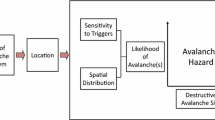Abstract
The seismic risks to which populations are exposed should be estimated reliably for mitigation and preparation of response to disastrous earthquakes. Three parameters need to be known: Population numbers, properties of the built environment, and the seismic hazard. If we focus on large cities, we can say that at least one of these is known satisfactorily, namely the population, but not the other two. In the developing world, the numbers of buildings in a city are known only approximately, their distribution into building types (resistance to shaking) has to be assumed, and the distribution of types throughout the city is unknown. Recent verification of the world seismic hazard map has shown that it is grossly misleading: Instrumental measurements of accelerations due to six earthquakes were about three times larger, on average, than the maximum likely accelerations shown on the map; the macroseismic intensities reported for the last 60 earthquakes with M ≥ 7.5 were all significantly larger than expected, based on the hazard map (by 2.3 intensity units for the 12 deadliest earthquakes); and calculations of losses of life based on the hazard map underestimate the losses sustained in the 12 recent earthquakes with more than 1,000 fatalities by two to three orders of magnitude. This means that the seismic risk in most of the approximately 1,000 large cities at risk in the developing world is unknown. To remedy this intolerable situation, models for the built environment in cities need to be constructed, using cost-effective analyses of satellite images, and worst case scenario estimates of the losses in case of the nearest maximum credible earthquake.
Similar content being viewed by others
References
Anooshehpoor A, Brune JN, Zeng Y (2004) Methodology for obtaining constraints on ground motion from precariously balanced rocks. Bull Seismol Soc Am 94:285–303
Brune JN (1996) Precariously balanced rocks and ground-motion maps for southern California. Bull Seismol Soc Am 86:43–54
Brune JN (2002) Precarious rock constraints on ground motion from historic and recent earthquakes in southern California. Bull Seismol Soc Am 92:2602–2611
Castanos H, Lomnitz C (2002) PSHA: is it science? Eng Geol 66:315–317
Geller RJ (2011) Shake-up time for Japanese seismology. Nature 472:407–409
Giardini D (1999) The global seismic hazard assessment program (GSHAP)—1992/1999. Ann Geofis 42:957–974
Klügel JU (2007) Error inflation in probabilistic seismic hazard analysis. Eng Geol 90:186–192
Klügel JU (2011) Uncertainty analysis and expert judgment in seismic hazard analysis. Pure Appl Geophys 168(1–2):27–53
Kossobokov V, Nekrasova A (2012) Global seismic hazard assessment program maps are erroneous. Seism Instrum 48(2):162–170
Panza GF, Irikura K, Kouteva-Guentcheva M, Peresan A, Wang Z, Saragoni R (2011) Advanced seismic hazard assessment. Pure Appl Geophys 128(3–4):1–752
Paskaleva I, Kouteva-Guencheva M, Vaccari F, Panza GF (2011) Some contributions of the neo-deterministic seismic hazard assessment approach to earthquake risk assessment for the city of Sofia. Pure Appl Geophys 168:521–541
Shi B, Anooshehpoor A, Zeng Y, Brune JN (1996) Rocking and overturning of precariously balanced rocks by earthquakes. Bull Seismol Soc Am 86:1364–1371
Stein S, Geller R, Liu M (2012) Bad assumptions or bad luck: why earthquake hazard maps need objective testing. Seismol Res Lett 82(5):623–626
Trendafiloski G, Wyss M, Rosset P, Marmureanu G (2009) Constructing city models to estimate losses due to earthquakes worldwide: application to Bucharest, Romania. Earthq Spectra 25(3):665–685
Wang ZM (2011) Seismic hazard assessment: issues and alternatives. Pure Appl Geophys 168(1–2):11–25
Wyss M, Nekrasova A, Kossobokov VG (2012) Errors in expected human losses due to incorrect seismic hazards estimates. Nat Hazards 62(3):927–935
Zuccolo E, Vaccari F, Peresan A, Panza GF (2011) Neo-deterministic and probabilistic seismic hazard assessments: a comparison over the Italian territory. Pure Appl Geophys 168(1–2):69–83
Acknowledgments
We thank the Inventory Data Capture Project of the Global Earthquake Model and the JTI Foundation, based in Switzerland for support.
Author information
Authors and Affiliations
Corresponding author
Rights and permissions
About this article
Cite this article
Wyss, M., Rosset, P. Mapping seismic risk: the current crisis. Nat Hazards 68, 49–52 (2013). https://doi.org/10.1007/s11069-012-0256-8
Received:
Accepted:
Published:
Issue Date:
DOI: https://doi.org/10.1007/s11069-012-0256-8




